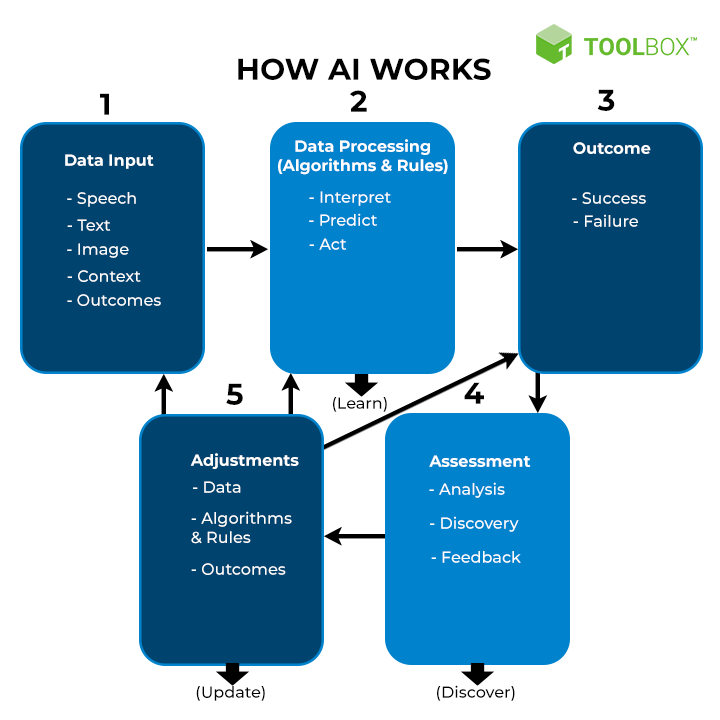.png?width=1920&height=1080&name=wbhero(2).png)
Artificial Intelligence's Role
In an increasingly interconnected world, cybersecurity has become a paramount concern. The relentless advancement of technology has ushered in new threats, making it essential to develop innovative approaches to safeguarding digital assets. Enter Artificial Intelligence (AI), a technological marvel that's revolutionizing the cybersecurity industry. This blog article explores the transformative role of AI in enhancing digital defenses.
How Does AI Work?
Artificial Intelligence (AI) works by processing and analyzing data to identify patterns and relationships. It often employs machine learning, which involves training algorithms with labeled data to learn from examples and make predictions or decisions based on new, unseen data. AI systems use this learning to automate tasks, make recommendations, or even mimic human-like behaviors. Deep learning, a subset of AI, uses neural networks with multiple layers to recognize intricate patterns, while natural language processing allows AI to understand and interact with human language. Continuous feedback and adaptation enable AI systems to improve their performance over time.

Did you know?
One of the first AI programs was created to automatically discover unknown forms of medications...in 1965!
Source: Stanford.edu
Here are some of the ways AI plays a crucial role in cybersecurity:
1. Predictive threat analysis: AI can anticipate and predict cybersecurity threats by analyzing historical data, identifying patterns, and recognizing potential risks before they materialize.
2. Anomaly detection: machine learning models are adept at spotting unusual activities and deviations from established norms. This helps in identifying potential security breaches or suspicious behavior.
3. Behavioral analysis: AI systems can continuously monitor user and system behavior, flagging any unusual activity that might indicate a cyberattack.
4. Automated response: AI-driven systems can respond to threats in real-time by initiating actions such as isolating compromised devices or blocking malicious traffic.
5. Threat intelligence: AI-powered tools can aggregate and analyze threat data from various sources, providing cybersecurity professionals with valuable insights into emerging threats and vulnerabilities.
6. Phishing detection: AI algorithms can identify phishing emails and malicious attachments by analyzing email content, sender behavior, and other indicators.
6. Endpoint security: AI-driven endpoint security solutions can protect individual devices, detecting and preventing malware and other threats at the device level.
The forecasted annual growth rate of AI between 2020 and 2027 is 33.2%
Source: SemRush
Artificial intelligence holds immense potential for enhancing cybersecurity by predicting and preventing threats, detecting anomalies, and automating responses, ultimately bolstering digital defenses. AI's ability to process vast amounts of data in real-time makes it a valuable tool in safeguarding sensitive information.
However, this very capability that makes AI a force for good can also be harnessed for malicious purposes. Cyber-criminals can leverage AI to develop more sophisticated and targeted attacks, making it challenging to detect and defend against evolving threats. Striking a balance between the ethical use of AI for cybersecurity and the need to protect against AI-driven attacks is a complex challenge that the industry faces today.
